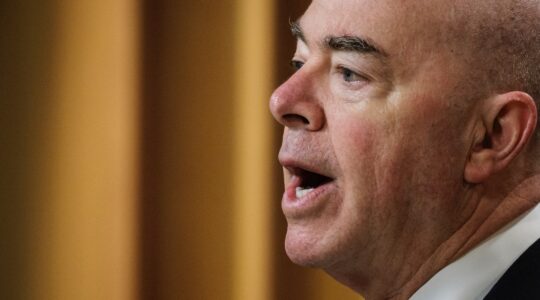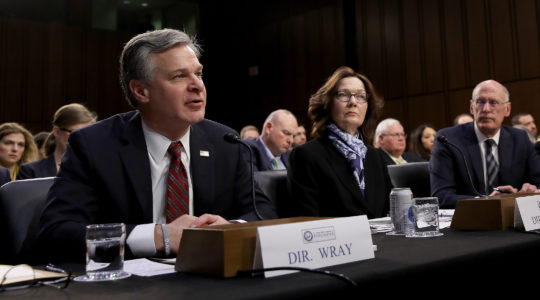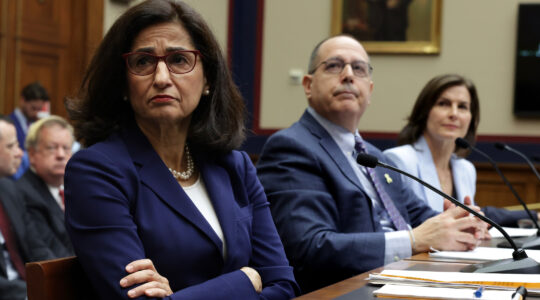My colleague Ben Harris has an interesting profile on Yeshiva University President Richard Joel.
Under Joel, who came to Y.U. in 2003 after serving as the president of Hillel for 14 years, the university’s fund raising has absolutely skyrocketed. Its budget has tripled since 2006, including a $100 million gift from fertilizer magnate Ronald Stanton, which Y.U. says is the largest single gift ever given to a Jewish institution.
After Y.U. sent out a press release last week announcing that it took in more philanthropic cash last year than it ever had, the Fundermentalist spoke with the university’s vice president for institutional advancement – or head honcho for fund raising – Dan Forman.
Based on the conversation, it seems that Y.U. is just getting started.
Forman dropped that the school is about to embark on a “comprehensive” campaign that will seek to bring in more than $1 billion to the school over seven years for educational improvements.
The campaign will be directly tied to a strategic plan that is in the final stages of development – and is not yet public – that will be rolled out in 2009, Forman said.
The plan is predicated on Y.U.’s fund-raising bonanza over the past two years, which started with the Stanton gift.
In 2006-2007, the year that Stanton made his $100 million pledge, Y.U. took in a total of $159 million in pledges. The following year, YU took in $148 million. Discounting the mammoth Stanton gift, that is a jump from $59 million to $148 million in one year, which Forman credits directly to Stanton.
“Ron’s commitment the year earlier created a new level of philanthropy for Yeshiva University and for Jewish institutions around the country,” Forman said. “I believe that is always an effect after model gifts are given.”
In 2007-2008, YU received a $25 million pledge for its Einstein School of Medicine, and two separate $10 millions gift from an anonymous donors that have yet to be designated.
In total the school brought in 30 gifts of $1 million or more last year.
Forman knows a thing or two about fund raising. Before coming to Y.U., he oversaw a $1.2 billion capital campaign for the UJA Federation of New York.
Y.U.’s billion dollar-plus campaign will hinge on how successfully the university can reach out to its alumni.
Traditionally the organization has received most of its philanthropic income from the Jewish community outside of its alumni base. About 78 percent of donations to Y.U. come from non-alumni, while 22 percent comes from alumni. That is about the opposite of what most universities see, Forman said.
Y.U.’s fund-raising team, which has grown to about 60 professional staff over the past several years, will seek to maintain the dollar total that it now takes in from non-alumni, but will try to increase its numbers from alumni to bring the ratio of alumni to non-alumni gifts closer to the national average.
The time is ripe for Y.U. to start cultivating its graduates, says Forman. The university’s strength is arguably its graduate schools – Einstein is a world-class med school, and its law school, social work school, rabbinical seminary are also well respected. But they are all relatively young. Einstein is about 50 years old, The Benjamin Cardozo School of Law is 30. Now is the time that they should start paying dividends, according to Forman.
Generally medical school alumni are not incredible givers, Forman said, primarily because most doctors – unless they go into incredibly lucrative private practices – do not make enough money to give mega gifts. But law school can be a different story.
The real goldmine, though, should be the pool of alumni of Y.U.’s Sy Simms School of Business, a 20-year-old undergraduate business program that is known for its strong job placement. Y.U. has already started to take in six-figure gifts from that market.
Forman is not worried about the recession, either.
Diversifying its fund-raising market by dipping into the alumni pool and reaching out to more foundations should bring stability. Y.U. works with several hundred foundations of various sizes, and Forman says that they have been largely unaffected by the economy’s down turn, primarily because foundations tend to invest conservatively, aiming to make just enough to be able to pay for overhead and give away their mandated 5 percent each year – and not aiming to strike it rich like individual investors.
And generally, the philanthropy world tends to follow recessions by two to three years. So, says Forman, if the recession lasts only a couple of years and the school is able to ride out the philanthropy lag, it should be able to catch the market when it is on the upswing in a couple of years and go unaffected.
Don’t buy it? Consider this: That $1.2 billion campaign that Forman ran for the UJA? It started in 1987, the day after Black Monday.





